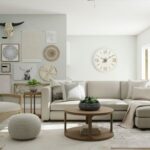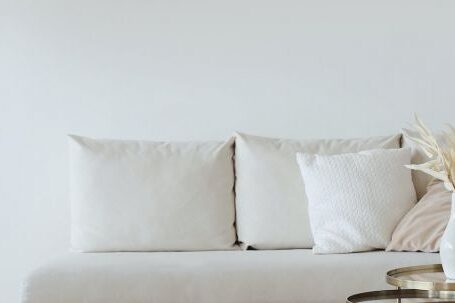In today’s fast-paced world, where clutter and chaos seem to dominate every aspect of our lives, minimalistic design offers a refreshing breath of simplicity and elegance. With its clean lines, neutral color palette, and focus on functionality, minimalism has become increasingly popular in interior design, fashion, and even technology. This article will delve into the beauty of minimalistic design and how it can transform our living spaces into serene retreats.
The Essence of Minimalism
At its core, minimalistic design is about stripping away the unnecessary and embracing the essential. It is an art form that celebrates simplicity and embraces a less-is-more approach. By eliminating excess ornamentation and focusing on clean, uncluttered spaces, minimalistic design creates a sense of calm and tranquility.
Clean Lines and Simple Forms
One of the defining characteristics of minimalistic design is the use of clean lines and simple forms. Furniture and architectural elements are often sleek and streamlined, devoid of any unnecessary embellishments. This emphasis on simplicity allows the beauty of the materials and shapes to take center stage, creating a harmonious and balanced aesthetic.
Neutral Color Palette
A neutral color palette is another hallmark of minimalistic design. Whites, grays, and earth tones dominate the color scheme, creating a sense of serenity and timelessness. By using a limited range of colors, minimalistic design achieves a cohesive and uncluttered look that is both soothing and visually appealing.
Functionality as the Focal Point
In minimalistic design, functionality takes precedence over decoration. Every element serves a purpose and is carefully chosen to enhance the overall usability of the space. This emphasis on functionality ensures that every object has a designated place and eliminates unnecessary clutter.
Creating Space with Minimalism
One of the most striking aspects of minimalistic design is its ability to create a sense of space and openness. By removing unnecessary objects and clutter, rooms appear larger and more inviting. This openness allows for better flow and circulation, making the space feel more relaxing and comfortable.
The Impact of Minimalistic Design on Well-being
Minimalistic design has a profound impact on our well-being. The clean and uncluttered spaces promote a sense of calm and tranquility, reducing stress and anxiety. By removing distractions, minimalistic design allows us to focus on what truly matters, fostering a sense of clarity and mindfulness.
Minimalism Beyond Interior Design
While minimalistic design is most commonly associated with interior design, its influence extends far beyond that. Minimalism has permeated various aspects of our lives, from fashion to technology. The sleek and minimalist designs of smartphones and laptops, for example, embody the principles of minimalistic design, combining functionality with elegance.
Embracing Minimalism
In a world filled with excess and clutter, minimalistic design offers a much-needed respite. Its clean lines, neutral color palette, and focus on functionality create spaces that are both beautiful and practical. By embracing minimalism, we can transform our living spaces into serene retreats that promote well-being and allow us to truly appreciate the beauty of simplicity. So why not embark on a journey of minimalism and discover the transformative power of this timeless design philosophy?





